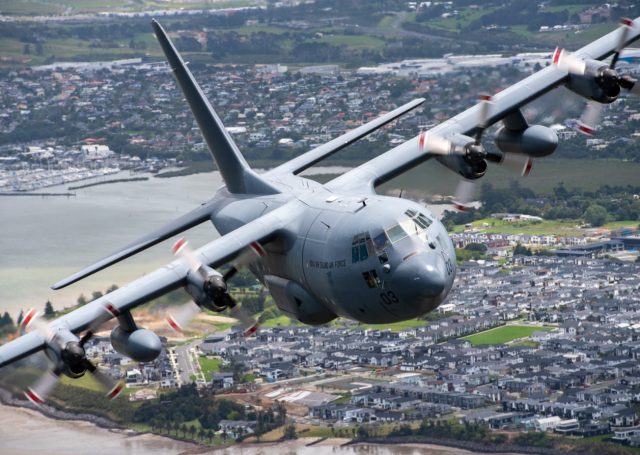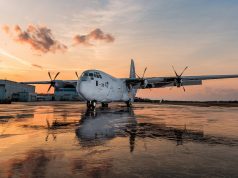The Royal New Zealand Air Force has bid farewell to the first of five C-130H(NZ) Hercules aircraft as it made its final flight on February 9, departing RNZAF Base Auckland and landing at Base Woodbourne to be retired.
NZ7003 was one of three C-130H Hercules to arrive in New Zealand in 1965, with the remaining two arriving in 1969. The final flight marked the end of nearly sixty years of operations for the airframe.
Operated by No. 40 Squadron, the tactical transport plane has flown missions around the world, from the Middle East to Antarctica and all places in between.
It has been involved in humanitarian aid and disaster relief missions to New Zealand’s Pacific neighbors, delivering aid following natural disasters, transporting vital military equipment and aid to multiple countries, most recently Ukraine, and hundreds of flights to the Antarctic carrying scientists and equipment for essential research to the frozen continent.
The aircraft has provided strategic airlift (inter-theatre) and tactical airlift (intra-theatre) as well as participating in numerous international operations and exercises.
The aircraft received a number of modifications and upgrades with the most recent being a Life Extension Program (LEP) that started in 2005. This involved an extensive avionics upgrade of the flight deck and structural refurbishment.
In 2020, New Zealand announced that a fleet of five Lockheed Martin C-130J-30 Super Hercules would replace the C-130H(NZ) aircraft, with deliveries scheduled to begin in 2024.
The country expects the full fleet to be in operation from 2025.
The C-130J-30 has more capacity than its predecessor due to its additional 5.4m in length and a payload capacity of 21 tons.
With a 15 ton payload, the new aircraft will be able to travel 2400 nautical miles, compared to the current 1800nm.
The aircraft will also be fitted with additional specialist equipment. Each will be fitted with wide bandwidth, high speed satellite communications system and an electro-optical/infra-red camera. Imagery, video and data can be streamed in real-time and the camera allows for aerial surveillance including while undertaking transport tasks – particularly useful during search and rescue and humanitarian and disaster relief missions.
The NZ$1.5 billion C-130J project will further include a full mission flight simulator and other supporting infrastructure.



























